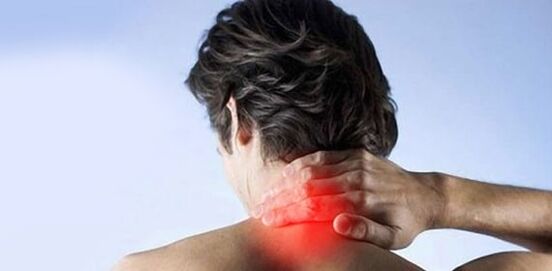
The loss of discs of a degenerative-dystrophic nature that occurs in the cervical spine due to a metabolic disorder is known as cervical spondylosis. The process of these changes is irreversible and, over time, can cause very serious health problems.
Cervical osteosarcoma is rapidly becoming younger, and now the disease often manifests itself even in very young patients. And there's nothing to be said about adulthood - almost everyone has one or another problem with their neck. Surely many people are familiar with the concept of "pinched nerve" when unable to turn their head? And this is one of the most unpleasant manifestations of this fatal disease, which without qualified treatment will increasingly remind itself
Each type of osteonecrosis has serious complications, so don't delay treatment.
Causes of cervical osteonecrosis
The following causes of osteonecrosis of the spine are distinguished, which sooner or later accumulate, leading to the appearance of certain changes in the bones and cartilage tissue of the upper vertebrae:
- The scourge of our times is a sedentary lifestyle and especially being in a static position during the day, including in front of the computer. The vertebrae do not receive enough nutrition and blood supply, which is why unwanted changes in their structure occur.
- Age-related changes in cartilage tissue. This is inevitable for almost all people over fifty, and sometimes even earlier.
- Lifetime spinal cord injury. This is why professional athletes often have a history of neck pain.
- Excess weight - extra weight increases the load on the entire spine, which also causes neck pain.
- Improper metabolism in the body, due to bad living habits and poor nutrition also contribute to the formation of diseases in the spine.
Symptoms of cervical osteonecrosis
The following symptoms of cervical osteochondrosis indicate existing problems in the functioning of the body:
- You are worried about frequent headaches accompanied by dizziness, flying flies and dark circles under the eyes as well as general weakness.
- Turning the head to either side is limited and painful.
- There is pain in the neck, shoulder blades and chest, as well as in the arms.
- Your characteristic is unexplained and frequent pressure drop.
- There is numbness in the fingers or hands and the movement of the tongue is limited.
- Tinnitus and other hearing problems.
- You feel insecure when walking, stumbling.
Treatment methods for cervical spondylosis
Of course, such an important task as the treatment of cervical spondylosis has long been attempted by doctors around the world and not without success. The disease is now well-studied and with the right approach it can be kept within the framework, allowing the patient to live a full life without limitations and pain. Doctors use the following methods to minimize and eliminate the manifestations of osteonecrosis:
- Acupressure. The oldest techniques of Chinese and Tibetan medicine will make you feel much more at ease.
- Moxotherapy, tszyu therapy, hirudotherapy. After such unconventional procedures, osteonecrosis goes into remission for a long time.
- Acupuncture (reflexology). One of the most effective techniques, the essence of which is that the thinnest needles are inserted into certain points on the patient's body at different depths. They produce a strong reflex response that has a beneficial effect on the cervical spine.
- Drag technique. They are based on the effect on the human body of two forces acting in opposite directions and, accordingly, reducing the pressure on the intervertebral discs.
- Physical therapy exercises and therapeutic food. Proper physical exercises, selected by an experienced professional, are the key to your success.
- PRP therapy is the newest way to stimulate regenerative processes. It is used to restore the functions of various organs after diseases and injuries, including to restore the function of the musculoskeletal system.

























